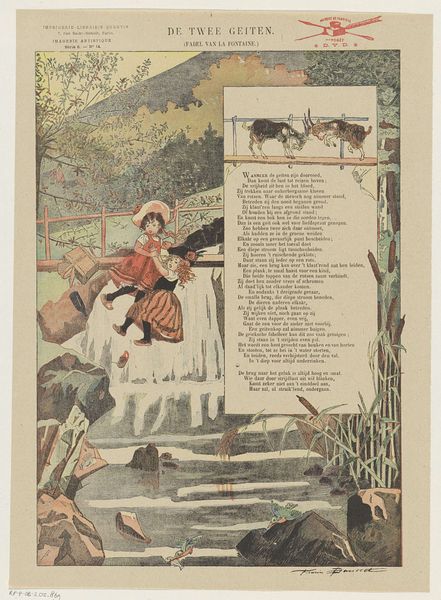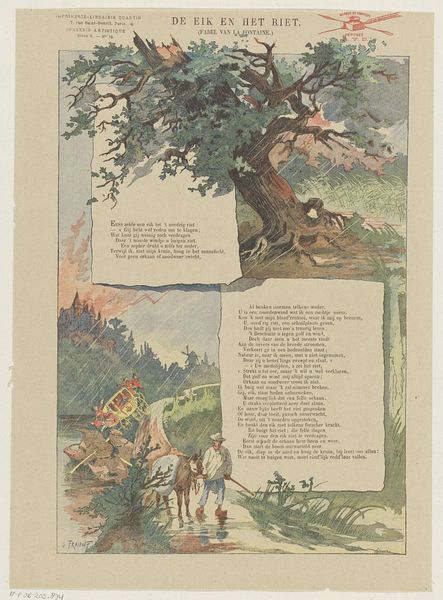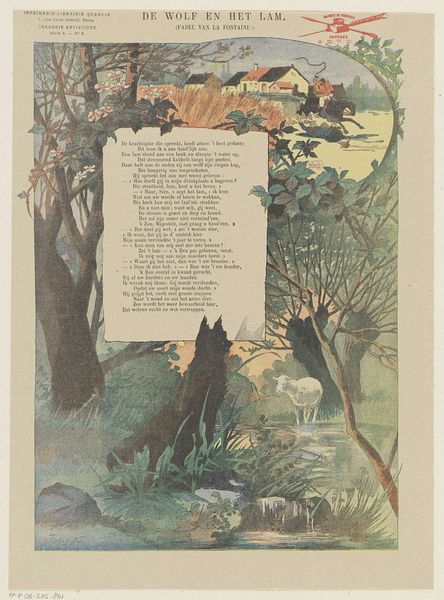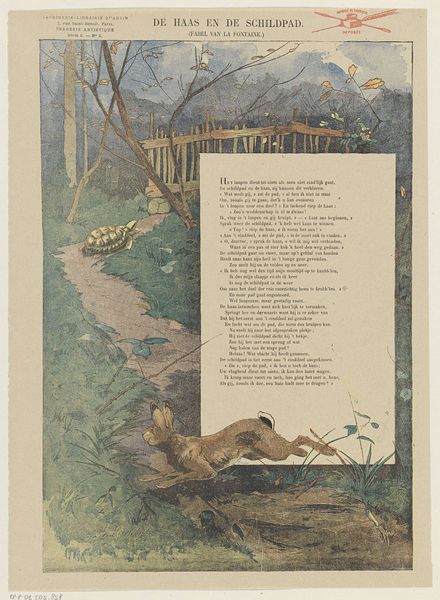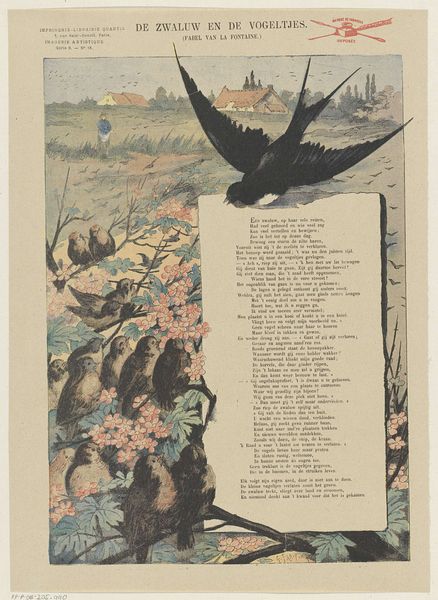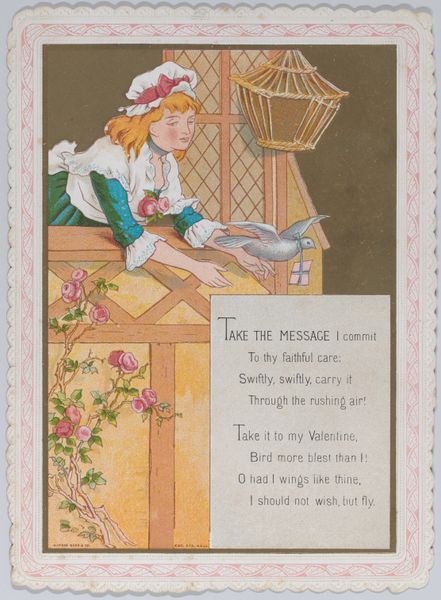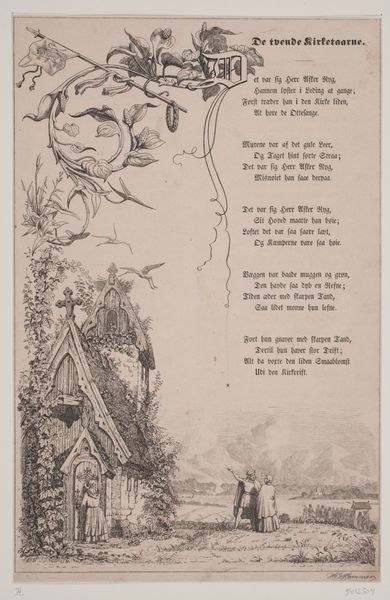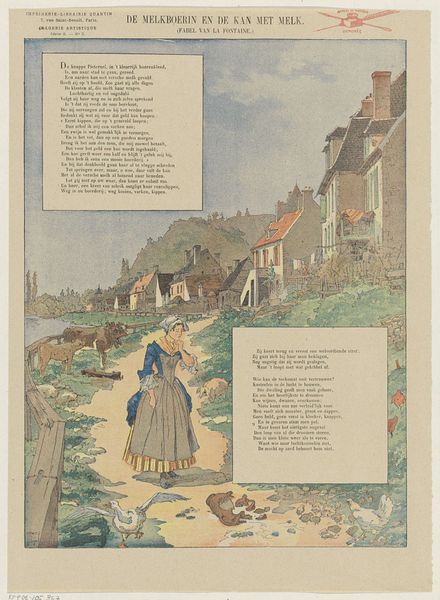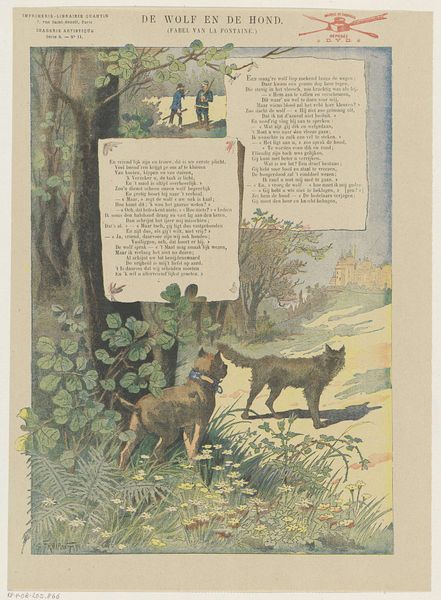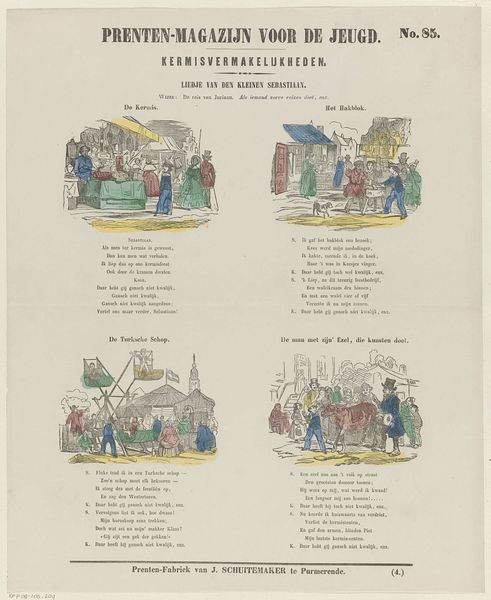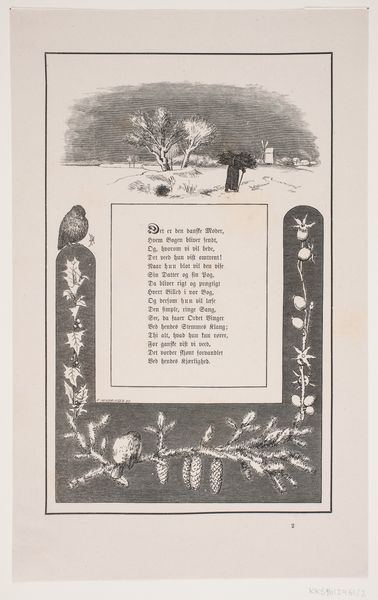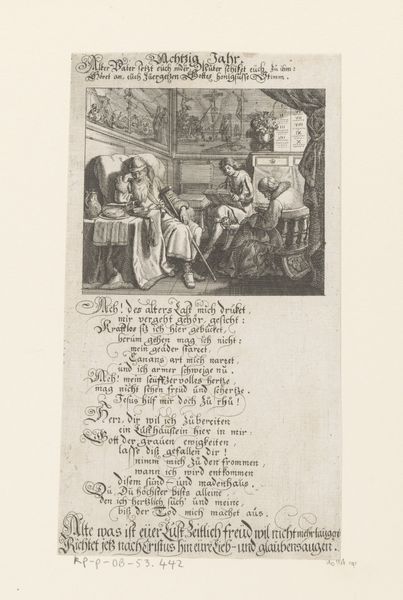
drawing, print, paper
#
drawing
#
narrative-art
# print
#
figuration
#
paper
#
genre-painting
Dimensions: height 365 mm, width 267 mm
Copyright: Rijks Museum: Open Domain
Curator: What a curious piece. The whimsical nature is immediately striking! Are those rats, deliberating near children who appear to be celebrating summer vacation? The pale colours lend a strange air of innocence and unease all at once. Editor: Indeed, this print by Firmin Bouisset, likely created between 1876 and 1890, presents precisely that unsettling juxtaposition. Its title, "Raadsvergadering van de Ratten," or "Council Meeting of the Rats," already hints at the layered narrative within. We have here a print employing a fascinating interplay of figuration, narrative art and genre painting elements all presented on paper. Curator: Layered is right. The composition itself is so divided. We have the old man peering out the window, the throng of children in the lower portion, the textual element sandwiched between all. This triad of compositional strategies creates, not disharmony, but intrigue! Editor: I'm drawn to how Bouisset utilises this tableau, mirroring La Fontaine’s Fable which appears within the work's own picture plane, as both critique and reflection. Note how the children below symbolize perhaps innocence oblivious to the decisions made in the "council" of adults above. The work cleverly critiques societal structures. Curator: Interesting point about innocence. I see the thematic juxtaposition but consider also the construction. See how Bouisset contrasts the muted tones of the interior with the brighter colours used for the children's clothing, underscoring the contrast between maturity, symbolized by dullness, against innocence symbolized by joyful pigments? It pushes us to ponder at what price progress is really forged? Editor: Progress, innocence, social stratification: All wrapped in one multi-tiered artwork! This serves as such a potent snapshot of societal dynamics during its time and prompts valuable dialogue today. It exemplifies the role of public art as catalyst for discourse and as a mirror to evolving socio-political landscapes. Curator: A dialogue sparked through careful structuring, use of contrast and thematic consideration. Editor: Ultimately it reinforces how historical perspective coupled with critical analysis enhance art’s social value, enabling richer public understanding and societal evolution.
Comments
No comments
Be the first to comment and join the conversation on the ultimate creative platform.
